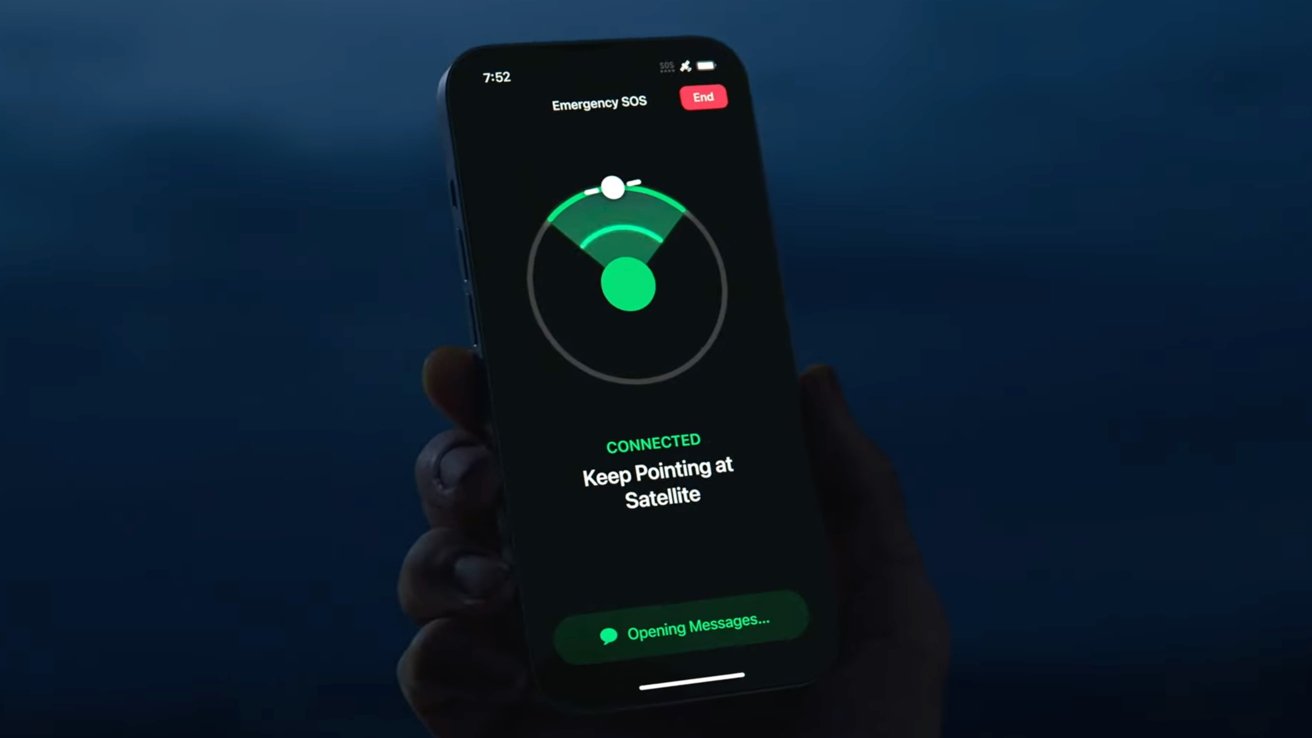Emergency SOS via satellite arrives for iPhone 14 owners in November 2022, yet one questionable report claims Apple will expand it outside of the United States before the end of the year.
Specialized technology in the iPhone 14 lineup enables the devices to communicate directly with a satellite in emergency situations. An on-screen UI guides the users through connecting and sending a message to emergency responders.
According to a report from German website MacPrime, Apple will announce other countries that will support Emergency SOS via satellite in 2022 and 2023. The website claims to have received the information directly from Apple, and AppleInsider has reached out to Apple for clarification.
The Emergency SOS via satellite feature will launch in November to iPhone 14 owners located in the United States, Puerto Rico, the Virgin Islands, and Canada. Apple has not publicly announced plans to expand the feature beyond the launch countries nor a timeline to do so.
Since the website is in German, a translation issue may have changed the meaning of the sentence. However, it implies that Apple will reveal new countries that will gain Emergency SOS via satellite in 2022.
With the initial rollout occurring in November, it seems highly unlikely that Apple could expand coverage to other countries before 2023. Apple's satellite partner has limited coverage in some countries in South America and Europe, and it's not clear if they have the same capabilities and bandwidth support that's required for the feature.
The iPhone 14 and iPhone 14 Pro lineup have access to this feature for free for the next two years. Travelers visiting the United States from other countries will have access to the feature, as long as their iPhone wasn't purchased in China, Hong Kong, or Macao.
Emergency SOS via satellite is only available when the device cannot locate a cellular or WiFi signal. The satellite connection feature can also be used to send the user's location to friends or family members.
 Wesley Hilliard
Wesley Hilliard







-m.jpg)







 Malcolm Owen
Malcolm Owen
 Andrew Orr
Andrew Orr
 William Gallagher
William Gallagher
 Sponsored Content
Sponsored Content
 Christine McKee
Christine McKee

 Thomas Sibilly
Thomas Sibilly






9 Comments
MacPrime(.ch, not .de) is a Swiss (German language) website.
In their news message they don't state it's directly from Apple.
Apple has said that new iPhone purchases get 2 years of satellite service included with the purchase. I haven’t seen pricing for the plans after that 2 year intro period. Have they provided that information and I just missed it so far?
Since iPhones back to the iPhone 12 are capable of this function, I wonder if they will eventually open that option. I have a feeling the answer to that will be no, to encourage people to upgrade, and because the satellite system used likely is concerned it won't have the capacity to handle the sos messages from that many iPhones in times of natural disaster where millions may be affected
The article says "The satellite connection feature can also be used to send the user's location to friends or family members." This suggests that the user's location is not necessarily sent to the satellite. And if it is not sent to the satellite, then how would the satellite know the location of the phone? And if it doesn't know the location of the phone, how does it prevent callers from, say, Mexico or Cuba, (which are near the US) from using this feature? I haven't seen anyone asking if iOS uses geo-fencing to restrict users to certain countries.
Most GPS systems have a maximum latitude that they orbit at. Some go only as high as 56 degrees north. Some go 78 degrees north. I think that a few go 82 degrees north. But they don't go 90 degrees north because you can't have an orbit that high remain in sun-synchronous orbit due to the earth's inclination. You can find a few people showing photos of their GPS device working at the poles, but they may have had to wait a while (including waiting for good weather, due to the ionosphere being a problem at low angles) to get that reading, as the highest-visible GPS satellites are only 5 degrees above the horizon when you are at the poles.
Apple shouldn't need anyone's permission for enabling Emergency SOS from operating on international waters or international locations like the Antarctic. That's another 70+% of the Earth's surface that Apple could immediately enable if it wanted to. I can imagine scenarios, like pirates taking over a ship, where someone hiding on the ship would like to use an iPhone to send out his location for rescue.